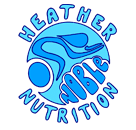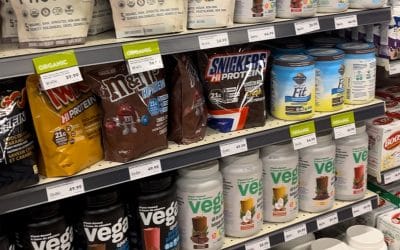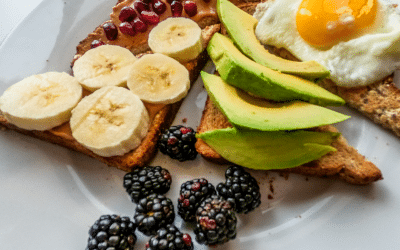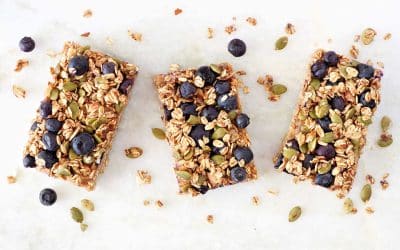Nutrition for the Female Athlete: Let’s Talk Hormones
When it comes to sports nutrition, there’s no shortage of advice. But here’s the catch—most of it is based on research in male athletes. Female athletes are not just smaller versions of men; our physiology, driven largely by reproductive hormones, plays a critical role in how we train, fuel, and perform. And yet, there remains a huge gap in research and education specializing in female athletes.
Understanding how your menstrual cycle influences your energy needs, performance capacity, and recovery can be a game-changer. Let’s dive into how hormone fluctuations across the cycle affect training outcomes and what you can do nutritionally to support your body at every stage.
The Role of Carbohydrates and Hormonal Health
As training intensity rises, your body becomes increasingly reliant on carbohydrates for fuel. Carbs are your body’s ‘go-to’ energy source—quick to break down and essential for high-intensity performance. While fats can be used during lower-intensity exercise, they simply can’t fuel your muscles fast enough during hard training.
There’s growing awareness around “fueling for the work required,” but many female athletes fall into the trap of under-fueling, particularly on rest days or during low-intensity sessions. This is especially risky because carbohydrate availability is crucial for the health of the hypothalamic-pituitary axis (HPA)—the hormonal control center. Underfueling, especially inadequate carbohydrate intake, can disrupt the menstrual cycle and suppress reproductive hormones. Hormone levels are crucial for bone health, injury prevention, and more.
Minimum carbohydrate intake should never dip below 3g per kg of body weight, even on lighter training days, and should increase with training load.
Understanding Your Cycle: The 4 Phases and How to Fuel Them
Every cycle is unique, ranging from 21 to 40 days. Knowing your personal “normal” is key. Significant shifts—shorter than 25 days or longer than 40—may signal hormonal disruption and are worth investigating.
Here’s a breakdown of the four phases and what’s happening inside your body, plus practical nutrition tips to support each stage:
Phase 1: Menstrual (Days 1–7)
Hormones: Lowest levels of estrogen and progesterone
You may feel surprisingly strong during your period. Inflammation drops, immunity improves, and you may notice a higher pain threshold and faster recovery.
Performance Perks:
- Strength and VO2 max can peak
- Higher endorphins can make training feel more manageable
Nutrition Goals:
- Prioritize iron-rich foods (to offset blood loss)
- Focus on magnesium, antioxidants, and high-protein meals
- Keep carbohydrate intake consistent—fasted training (going into a workout without eating prior) is not recommended and may disrupt hormonal balance. There is some research to suggest that all female athletes should consider avoiding any fasted training to avoid hormone dysregulation.
Phase 2: Follicular (Days 8–14)
Hormones: Rising estrogen
During this phase, your body is more efficient at using fat as fuel, which can make workouts feel a little easier. However, glycogen (carb) storage is access tends to be more difficult for the body during this phase, so it’s important to keep carbohydrate intakes consistent. You might experience a dip in appetite and motivation, but it’s actually a great time to push intensity in your training.
Performance Perks:
- Strength, speed, and recovery all improve
- Excellent time for HIIT, heavy lifting, or intense intervals
Nutrition Goals:
- Increase carbohydrate and overall energy intake
- Use liquid nutrition (like smoothies) if appetite is low
- Focus on omega-3s, iron, calcium, and vitamin D
- Load up on fruits and vegetables to support immunity
Phase 3: Luteal (Days 15–21)
Hormones: High progesterone
This phase brings an increase in metabolism—and often in cravings. It’s not your imagination; your body is working harder and needs more energy. However, digestion slows, and athletic performance may feel a bit harder. This phase is great to focus on lower intensity endurance training.
Performance Notes:
- Elevated heart rate and body temp = train by heart rate or feel instead of pace
- Muscle recovery slows, soreness increases
- Great phase for endurance and volume, not intensity
Nutrition Goals:
- Focus on hydration and electrolytes
- Boost protein (especially pre- and post-workout) and vitamin B
- Increase carbohydrates during training to compensate for decreased storage efficiency
- Stay consistent with frequent carb and protein intake
- Consider some tart cherry juice to help with muscle soreness
If racing:
Fuel heavily—your body won’t access stored carbs as well, so aim for a higher amount of carbohydrates (that is tolerated) per hour during endurance events >60mins.
Phase 4: Pre-Menstrual (Days 21–28)
Hormones: Rapid drop in estrogen and progesterone
PMS symptoms peak here—including bloating, fatigue, cravings, and poor sleep. Your body is more carb-dependent during this phase, and recovery may be slower due to sleep disruption and hormonal shifts.
Performance Notes:
- Focus on rest, sleep, and recovery
- Concentration and motivation may dip
- Prioritize lighter, lower-intensity work
Nutrition Goals:
- Increase magnesium, zinc, and omega-3s daily during the 7 days before your period
- Support mood and cravings with steady carb intake
- Stay on top of hydration and electrolytes
Final Thoughts
Your menstrual cycle isn’t a barrier—it’s a powerful biofeedback system. By syncing your training and nutrition to your hormonal rhythm, you can unlock better performance, quicker recovery, and improved long-term health. It’s time to stop ignoring the female physiology in sports and start optimizing for it.




